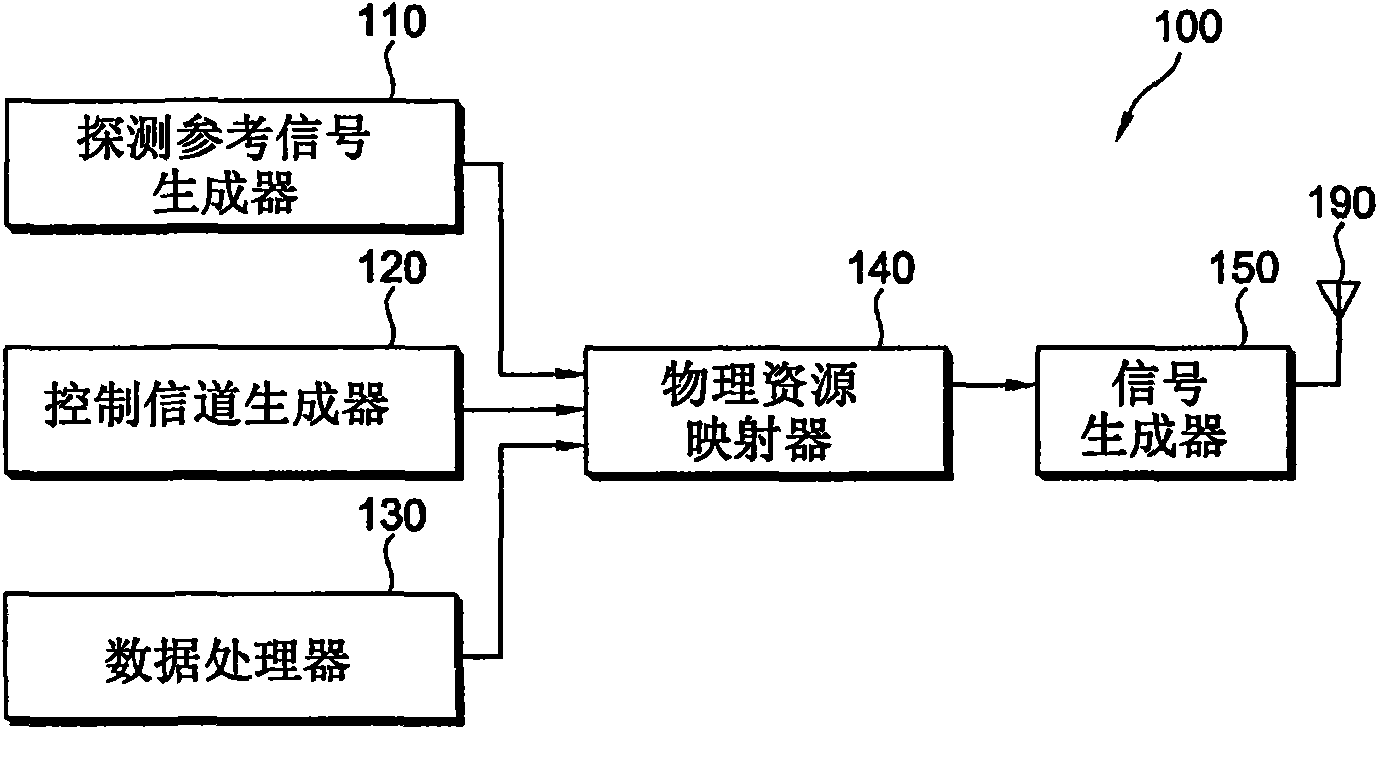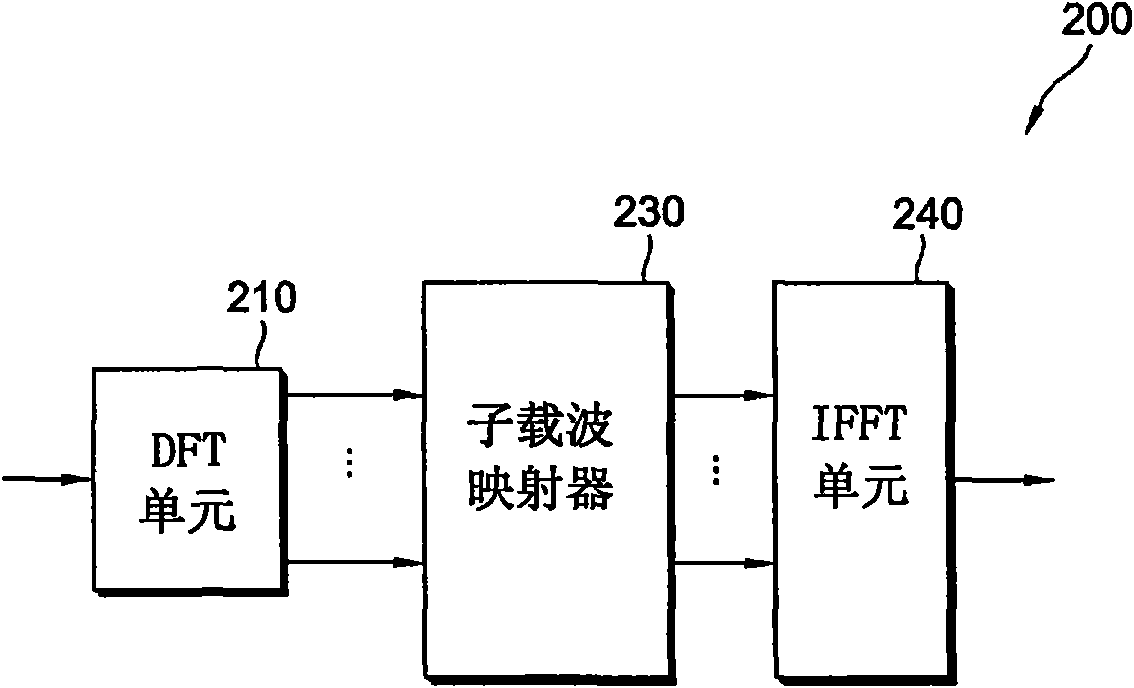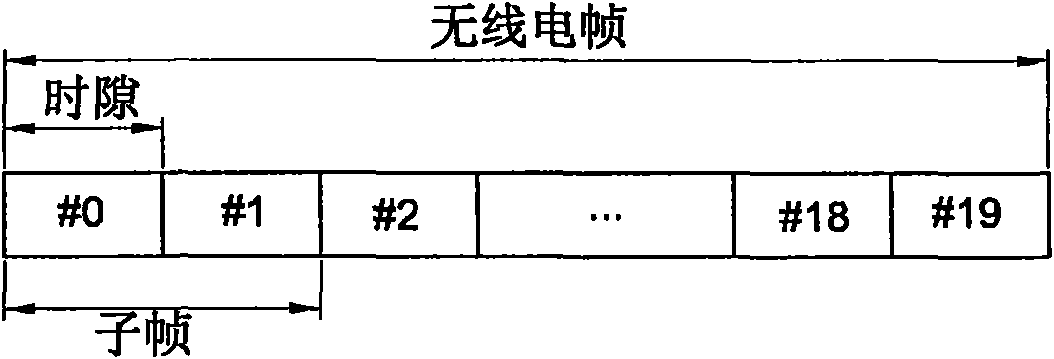Method of transmitting sounding reference signal in wireless communication system
A technology for detecting reference signals and wireless communication systems, which is applied in multiplexing communication, orthogonal multiplexing systems, electrical components, etc., can solve problems such as difficulty in maintaining single-carrier characteristics, difficulty in improving frequency efficiency, etc., and achieve reduction Effects of battery consumption, reduced scheduling overhead, and improved spectral efficiency
- Summary
- Abstract
- Description
- Claims
- Application Information
AI Technical Summary
Problems solved by technology
Method used
Image
Examples
no. 1 example
[0116] First Embodiment: Operation of Two Types of PUCCHs
[0117]Two types of PUCCH are defined according to coexistence with SRS in one subframe. For example, Type 1 control channel (or symmetric control channel) cannot coexist with SRS, and Type 2 control channel (or asymmetric control channel) can coexist with SRS.
[0118] Figure 12 An example of two types of PUCCH is shown. The type 1 control channel is a general PUCCH which is used for an ACK / NACK channel when it is not necessary to simultaneously transmit an ACK / NACK signal and an SRS in at least one resource block of any subframe. During a subframe using a type-1 control channel, another UE may transmit an SRS by using a resource block. The type 2 control channel is an optional PUCCH provided in consideration of the transmission of the SRS. The first slot includes SC-FDMA symbols punctured to transmit SRS. A spreading factor (SF) of a region for transmitting an ACK / NACK signal is 3 in the first slot and 4 in t...
no. 2 example
[0132] Second embodiment: Scheduling performed by BS
[0133] The BS performs scheduling so that the UE does not transmit uplink control information and the SRS at the same time.
[0134] Figure 20 An example of a scheduling method performed by a BS is shown. If UE1 wants to send SRS in a specific subframe, the BS prevents UE1 from sending ACK / NACK signals on the PUCCH in the subframe. On the contrary, the BS schedules such that another UE other than UE1 transmits an ACK / NACK signal in the subframe. That is, the BS performs scheduling such that a UE cannot simultaneously transmit the SRS in one subframe and the uplink control information on the PUCCH. This can be achieved by using additional signaling or by sending a predetermined SRS.
[0135] On the contrary, if there is no need to restrict downlink transmission for UE1, the BS may prevent SRS from being transmitted in the subframe.
no. 3 example
[0136] The third embodiment: operation of a single type of PUCCH
[0137] The PUCCH in use may be designed such that uplink control information and SRS are not transmitted through the same resource region. PUCCH has the same structure regardless of whether SRS is transmitted or not. That is, on the assumption that when SRS is transmitted, a specific resource region (for example, SC-FDMA symbol(s)) designated only for SRS transmission is always used, regardless of whether SRS is transmitted, PUCCH has such a structure : In this structure, the SRS is transmitted only through the specific resource region, and the control signal is transmitted only through the remaining regions except the specific resource region.
[0138] For this, the aforementioned asymmetric control channel structure can be used as a fixed PUCCH structure. For example, in an ACK / NACK channel, the first slot uses 3 demodulation reference signal symbols and 3 ACK / NACK symbols, and the remaining one symbol is...
PUM
 Login to View More
Login to View More Abstract
Description
Claims
Application Information
 Login to View More
Login to View More - R&D
- Intellectual Property
- Life Sciences
- Materials
- Tech Scout
- Unparalleled Data Quality
- Higher Quality Content
- 60% Fewer Hallucinations
Browse by: Latest US Patents, China's latest patents, Technical Efficacy Thesaurus, Application Domain, Technology Topic, Popular Technical Reports.
© 2025 PatSnap. All rights reserved.Legal|Privacy policy|Modern Slavery Act Transparency Statement|Sitemap|About US| Contact US: help@patsnap.com



